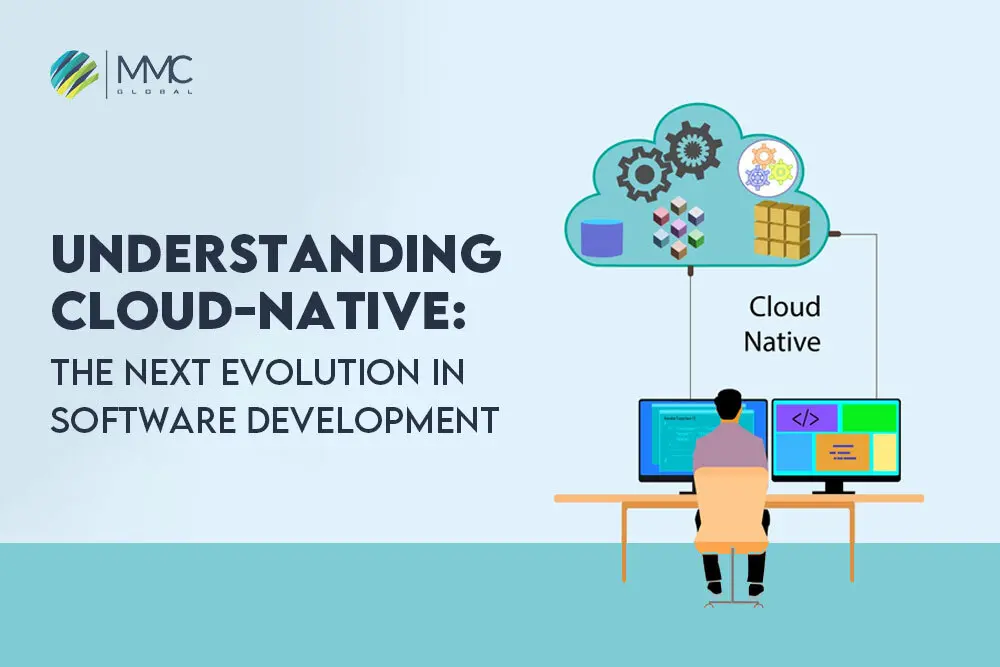Understanding Cloud Native: The Next Evolution in Software Development


In topical years, cloud computing has emerged as a dominant force in the world of technology. As organizations have shifted their workloads to the cloud, a new approach to software development has emerged: Cloud Native. In this blog post, we’ll explore what Cloud Native is, what makes it different from traditional software development, and why it’s the next evolution in software for future growth.
What is Cloud Native?
At its core, Cloud Native is an approach to software development optimized for cloud computing environments. Cloud Native applications are designed to take full advantage of the unique benefits of cloud computing, such as scalability, adaptability, and high availability. They are built using cloud-native technologies and are often designed to be modular and easily deployable.
Cloud-Native Applications Easily Deployed
Cloud Native applications are designed specifically to run on cloud infrastructure. They are built using cloud-native technologies and are optimized for cloud environments. These applications are typically designed to be modular and easily deployed, making it easy to scale up or down as needed. They are also designed to be highly available and fault-tolerant, meaning they can withstand individual components’ failure without impacting the overall application.

Agile Methodology Involves Cloud Application Development
Cloud application development is the process of developing applications that are designed to run on cloud infrastructure. This involves using tools and technologies optimized for cloud environments, such as containerization, microservices, and serverless computing. Cloud application development is typically done using agile methodologies and involves close collaboration between developers and operations teams.
Cloud App vs. Native App
A cloud app is an application that is designed specifically to run on cloud infrastructure. These applications are built using cloud-native technologies and are optimized for cloud environments. A native app, on the other hand, is an application that is built to run on a specific platform, such as iPhone or Android. While native apps can be deployed in the cloud, they are not specifically designed to take advantage of cloud-based resources in the same way that cloud-native applications are.
Why is Cloud Native the Next Evolution in Software Development?
Cloud Native represents the next evolution in software development because it is designed to take full advantage of the benefits of cloud computing. By following the principles of Cloud Native development, organizations can build highly scalable, elastic, and fault-tolerant applications. This will allow them to deliver better applications to their users and compete more effectively in today’s fast-paced digital landscape. According to a recent Gartner analysis, cloud-native platforms will host more than 95% of application workloads by 2025.
Cloud Native is a powerful approach to custom software development that offers many key benefits over traditional software development. One of the most important benefits of Cloud Native is its ability to scale easily and cost-effectively. Using cloud-native technologies, organizations can easily scale their applications up or down as needed without worrying about expensive infrastructure investments or lengthy deployment times.
Benefits of Cloud Native Practices for Security Reasons
Another important benefit of Cloud Native is its focus on agility and speed. Cloud Native applications are typically built using agile methodologies, so developers can quickly and iteratively develop and deploy new features. This allows organizations to respond rapidly to changing market conditions or customer needs and stay ahead of the competition.
Cloud Native applications are also highly resilient and fault-tolerant. They are designed to handle failures at the individual component level without impacting the overall application. This means that organizations can provide users with a more reliable experience, even in the face of unexpected problems.
In addition, Cloud Native applications are highly secure. They are built using best practices for security, such as encoding data at rest and in transit and implementing multi-factor authentication. This means that organizations can be confident that their applications are protected against cyber threats and other security risks.
Overall, Cloud Native represents the next evolution in software development. By embracing Cloud Native principles and using cloud-native technologies, organizations can build highly scalable, agile, resilient, and secure applications. This will allow them to deliver better applications to their users, respond quickly to changing market conditions, and stay ahead of the competition.
Read More: Most Effective Methods for Developing Cloud Native Application
To get started with Cloud Native development, organizations should begin by identifying the cloud-native technologies and tools best suited to their needs. This may include technologies such as Kubernetes, Docker, and AWS Lambda, as well as development tools like Jenkins and Git. They should also work closely with their development teams to adopt agile methodologies and ensure that their teams are well-trained in Cloud Native development best practices.
Conclusion
In conclusion, Cloud Native is an approach to custom software development optimized for cloud computing environments. Organizations can take full advantage of cloud computing by building applications designed specifically to run on cloud infrastructure. This is the next evolution in custom software development, and organizations that embrace Cloud Native will be well-positioned to succeed.



